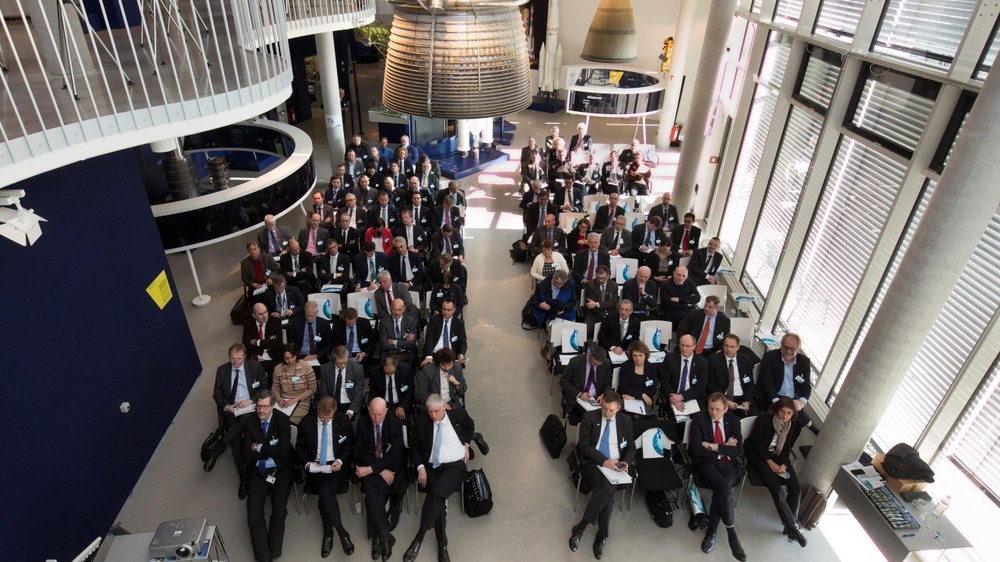Fourth Industrial Day – research and development for the space propulsion systems of tomorrow

Spaceflight is undergoing significant change. To be successful in the long term, spaceflight must be actively developed, new markets have to be exploited, and the opportunities offered by innovative technologies need to be seized. Which space propulsion systems are visionary, which are realistic, and which are sustainable? What are the pioneering developments in space propulsion systems? Is Europe's research and development work in this area currently sufficient? These are the questions being discussed by leading space experts at the 4th German Aerospace Center (Deutsches Zentrum für Luft- und Raumfahrt; DLR) Industrial Day, at the DLR site in Lampoldshausen on 9 and 10 March 2016.
"The importance of research and development work in the field of space propulsion is increasing, because the propulsion concepts of the future depend directly on factors such as diversity, performance, flexibility and competitiveness. Few other technological fields influence the success of launchers to this degree," said Pascale Ehrenfreund, Chair of the DLR Executive Board.
From research to industrial application
Liquid-fuelled rocket engines are one of DLR's strengths; for decades, it has been building on its research into space propulsion systems at its Lampoldshausen site, with new key areas of expertise and investments in test facilities. Furthermore, the DLR Institute of Space Propulsion has been specifically engaging in strategic collaborations. These support the transfer of research results to industrial applications, to maintain the competitiveness of European spaceflight.
As part of this event, Hansjörg Dittus, DLR Executive Board Member for Space Research and Technology, and Jean-Marc Astorg, CNES Director of Launchers signed an agreement for a joint French-German research programme for reusable launch vehicles. The priorities of the project include propulsion technology and flight tests as part of of the ReFEX experiments.
Scientific expertise and unique test facilities for the development of Ariane 6
At the Institute of Space Propulsion, DLR engineers test space propulsion systems on unique test rigs and under space conditions, specifically a vacuum. The rigs' availability for and adaptability to future test requirements are essential for the European launcher programme. Hence, DLR's contribution to the development of Ariane 6 will be to qualify the engines for flight readiness. A test campaign is currently being run with the new Vinci upper stage engine on the P4.1 altitude simulation test rig. The aim of this campaign is to determine the final design of Vinci prior to the qualification campaign scheduled for 2017, following years of development. With these tests, DLR researchers are acquiring knowledge of the behaviour of the engine; this knowledge is being used by manufacturer Airbus Safran Launchers for the final optimisations.
The first stage of Ariane 6 has a new engine, the Vulcain 2.1. This is an upgraded version of the Ariane 5 Vulcain 2 engine, which, among other things, has a sandwich nozzle. DLR's P5 test stand is currently being adapted to the new requirements for the development and qualification tests of the Vulcain 2.1, which are planned for 2017.
In addition, test rig P5.2 is currently being constructed at DLR Lampoldshausen under contract for ESA - European Space Agency, to carry out tests on the upper stage of the new Ariane 6 launcher. These include fuelling and defuelling tests and hot running tests for the stage, which houses the Vinci engine. These tests will enable not just engines and individual components, but entire cryogenic upper stages, to be qualified at DLR Lampoldshausen. The new upper stage test rig, which is planned for completion in 2017, is an ideal addition to DLR’s testing facilities.
Ariane rocket in use
On the very morning of the 4th Industrial Day, 9 March 2016, an Ariane 5 was launched for the second flight of the year. This was also the 71st consecutive successful flight since early 2003. Arianespace is planning a record number of eight Ariane 5 launches for the current year, including the first of a total of three planned launches each carrying four Galileo satellites, to continue to expand the European navigation system. The Ariane launcher has demonstrated its reliability and punctuality over the past 30 years, and thus gained over 50 percent of the commercial satellite launch market. At the same time, it has secured Europe's independent access to space. The development of the new Ariane 6 is now based on this foundation; in view of the increase in global competition, it now has the additional task of becoming substantially more cost effective. Airbus Safran Launchers is the main industrial contractor for the future Ariane 6 launcher. The development contract with the European Space Agency (ESA) was signed on 12 August 2015. The maiden flight of Ariane 6 is expected to take place in 2020; the Ariane 5 will be used in parallel until 2023, when it will be retired after more than 25 years of service.


